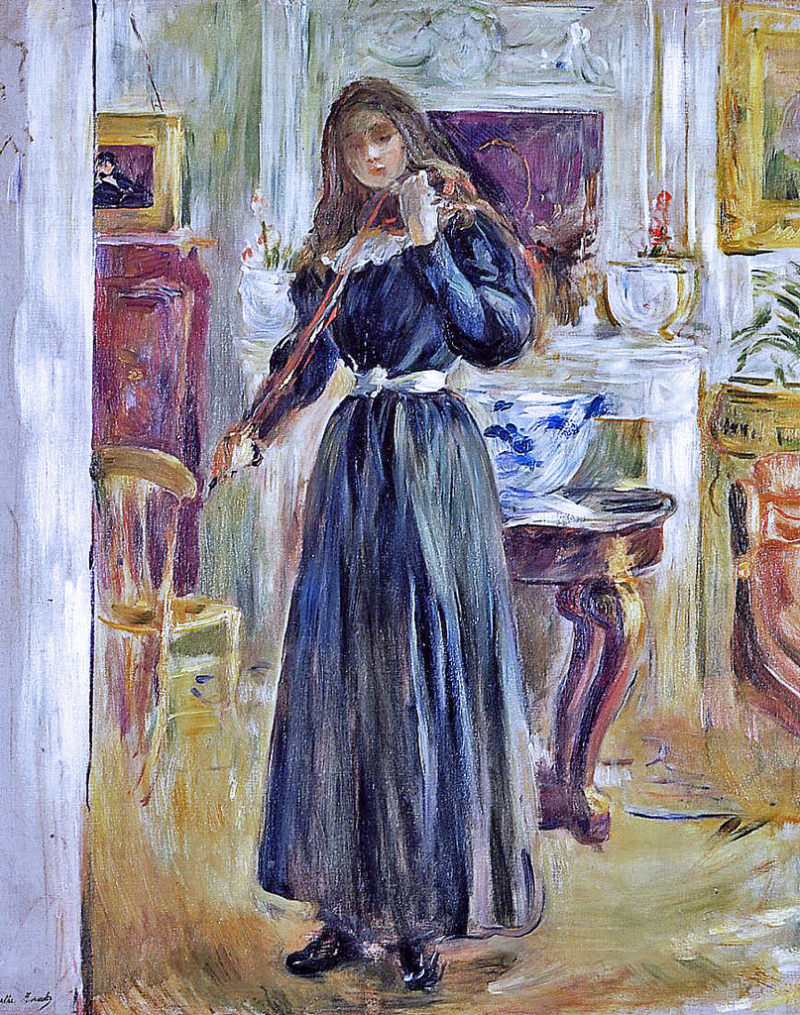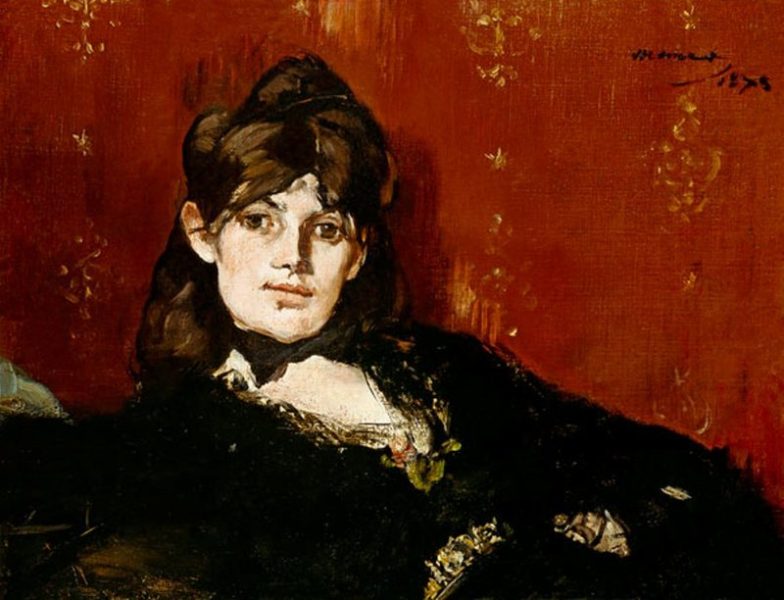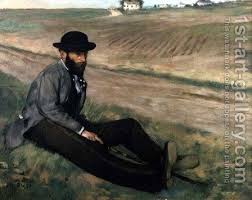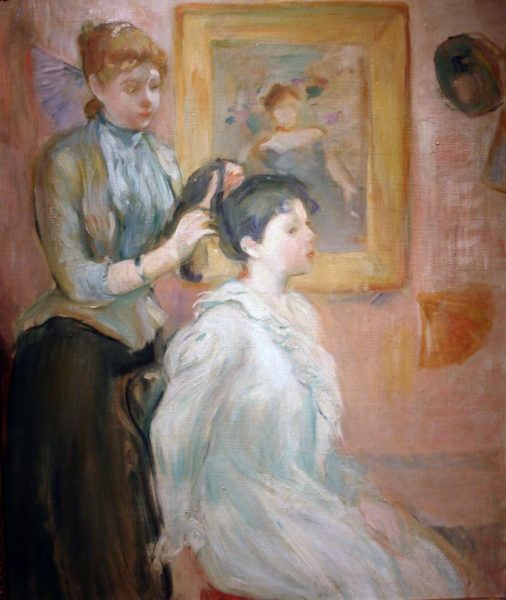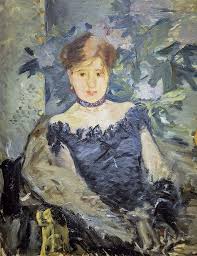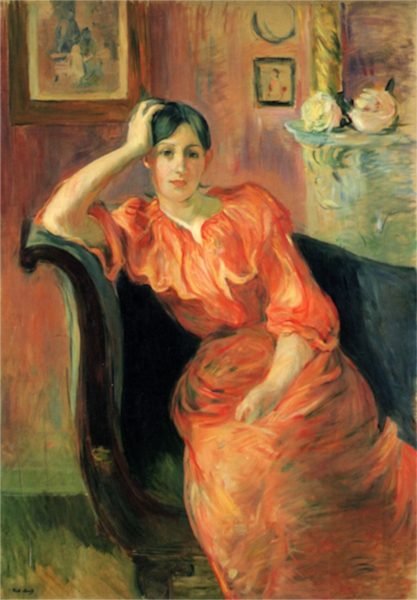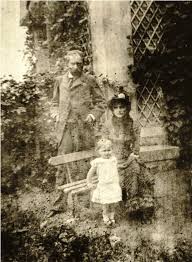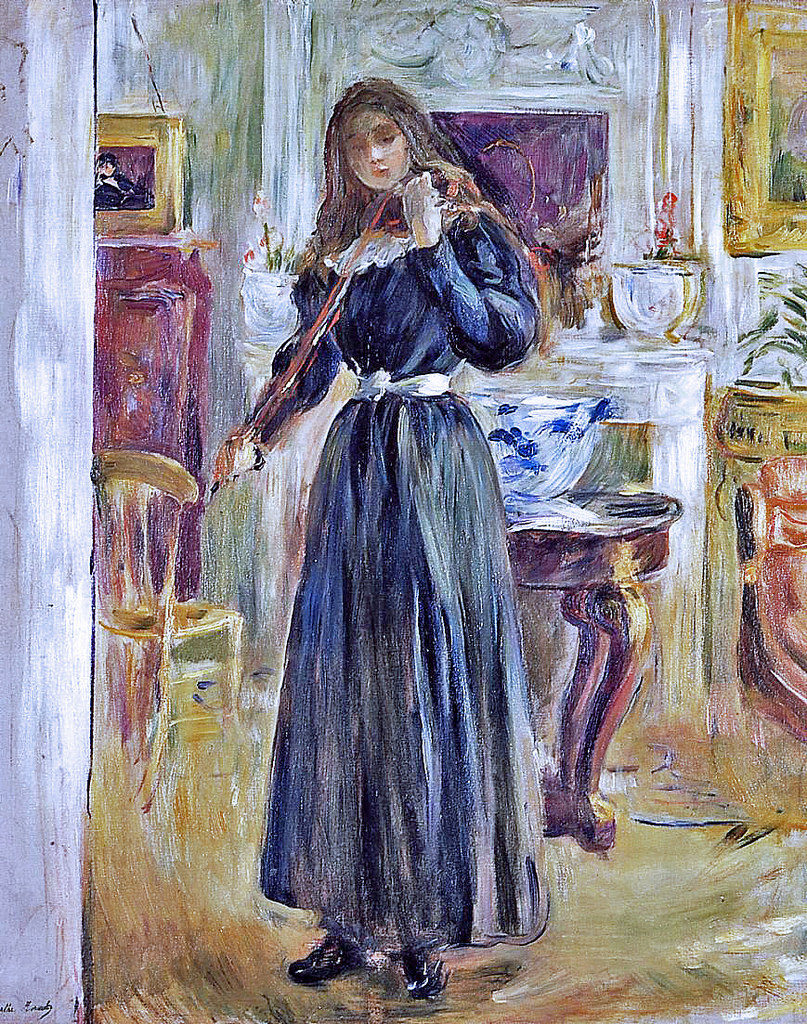
During January and February of 1894, although she wasn’t aware that they were to be the last months of her life, Berthe Morisot began to incorporate personal images into the backgrounds of her paintings. Perhaps after her husband died, she’d begun to consider her own mortality. Then too, her mother had died at age 48, so she might have felt that time was running out.
Berthe’s daughter Julie’s studies included piano and violin lessons. In Julie au Violin, you can see one of Edouard Manet’s many portraits of Berthe on Julie’s left. Reclining shows an intelligent, beautiful woman, so sultry that Manet cropped the canvas so that no one would ever see Berthe’s wanton pose. Although she never spoke of it (especially understandable after she married Edouard’s brother, Eugene), surely every time she passed this painting, Berthe thought of the years when she posed for Edouard. And although it’s hard to make out, that’s Degas’s portrait of Eugene to the right of Julie. She is framed by portraits of her parents before they were married.
The Coiffure shows a maid arranging a young woman’s hair, the first step in preparing to go out. In the background, Berthe’s painting, The Black Bodice, reminiscent of one of Berthe’s first evening gowns (seen in an early photograph of Berthe on the right), depicts the finished product: a subject who is fully coiffed, dressed, and adorned. As Berthe ruminates in La Luministe,
“A woman performing her toilette for male delectation is a work of art of her own making. Until she has placed the last hairpin, tied the last ribbon, and turned to make a final assessment of her reflection in the mirror, she is unfinished, just as Impressionist paintings were described as being unfinished.”
Berthe often used her niece, her sister Edma’s daughter, as a model. Jeanne Pontillon on a Chaise is a striking example of Berthe’s later work when, influenced by Renoir, she returned to richer Renaissance hues and longer brush strokes than were typical of Impressionist style. Behind Jeanne is a painting from a photograph of Berthe with Eugene and Julie sitting outside their country house in Mezy. It’s an image which shows the culmination of Berthe’s desires for someone to love, a child, and a beautiful home.
During Berthe’s life, there was much talk in artistic circles of “modern life”. Industrialization had brought new innovations such as escalators and electric lights to Paris. And after the Franco-Prussian war of 1871, there was more mixing of the classes. Workers in their blue smocks and gentlemen in top hats alike frequented café concerts, sporting events, and the Paris International Expositions. But for Berthe, integrating images of her personal life into her art was emblematic of her modern life as a wife and mother who also had a life-long career as an artist. She left documentary evidence of herself as a young beauty and as a contented mature woman.
